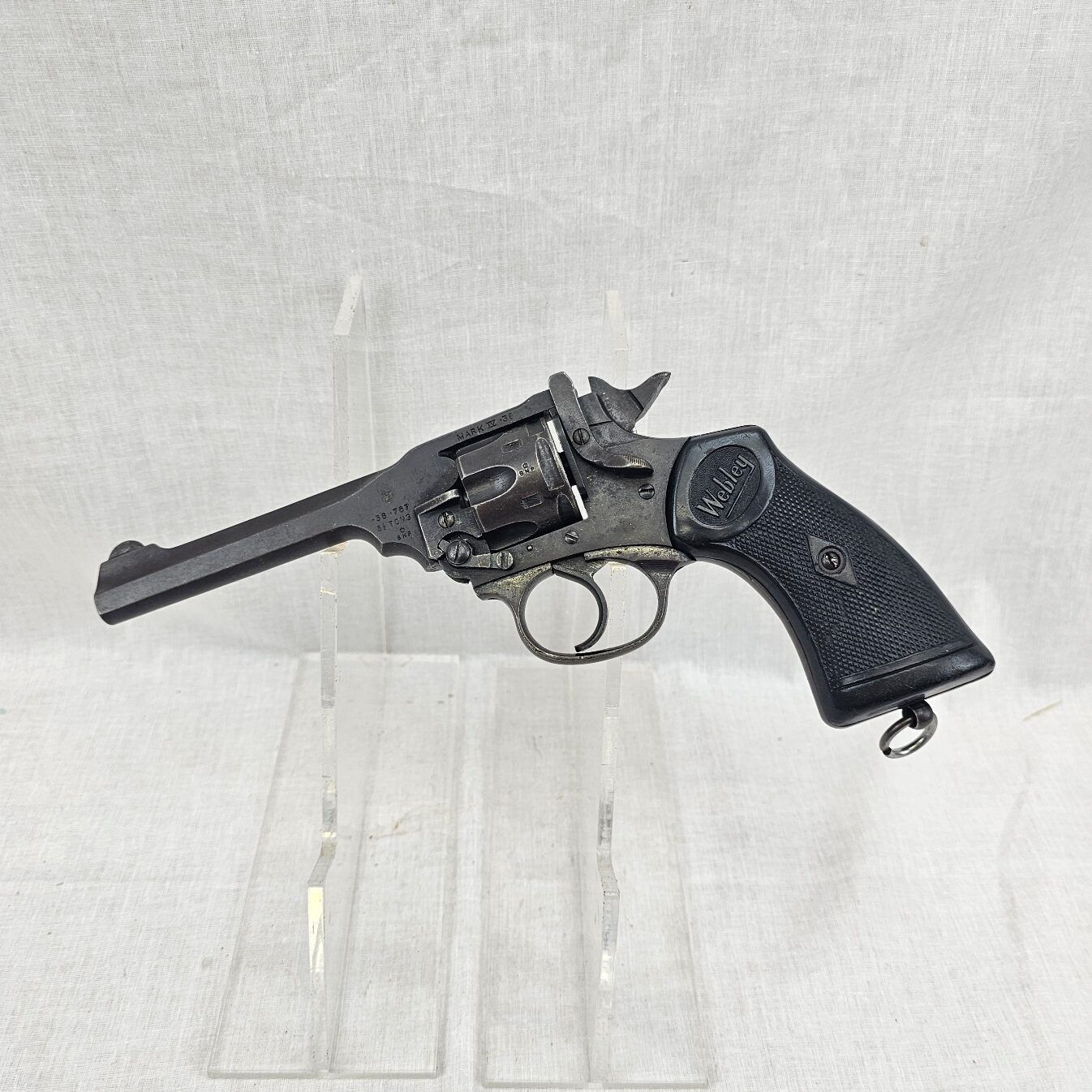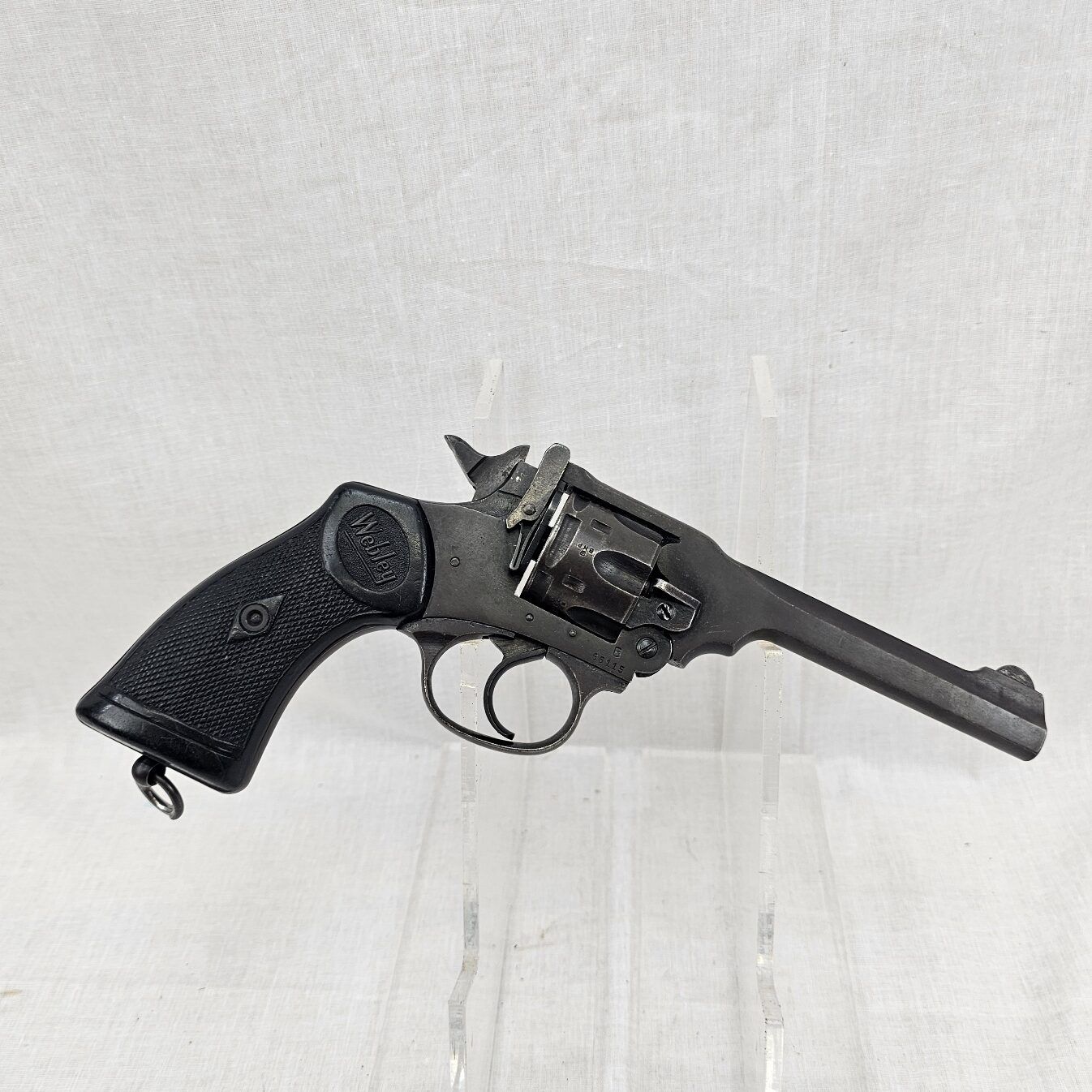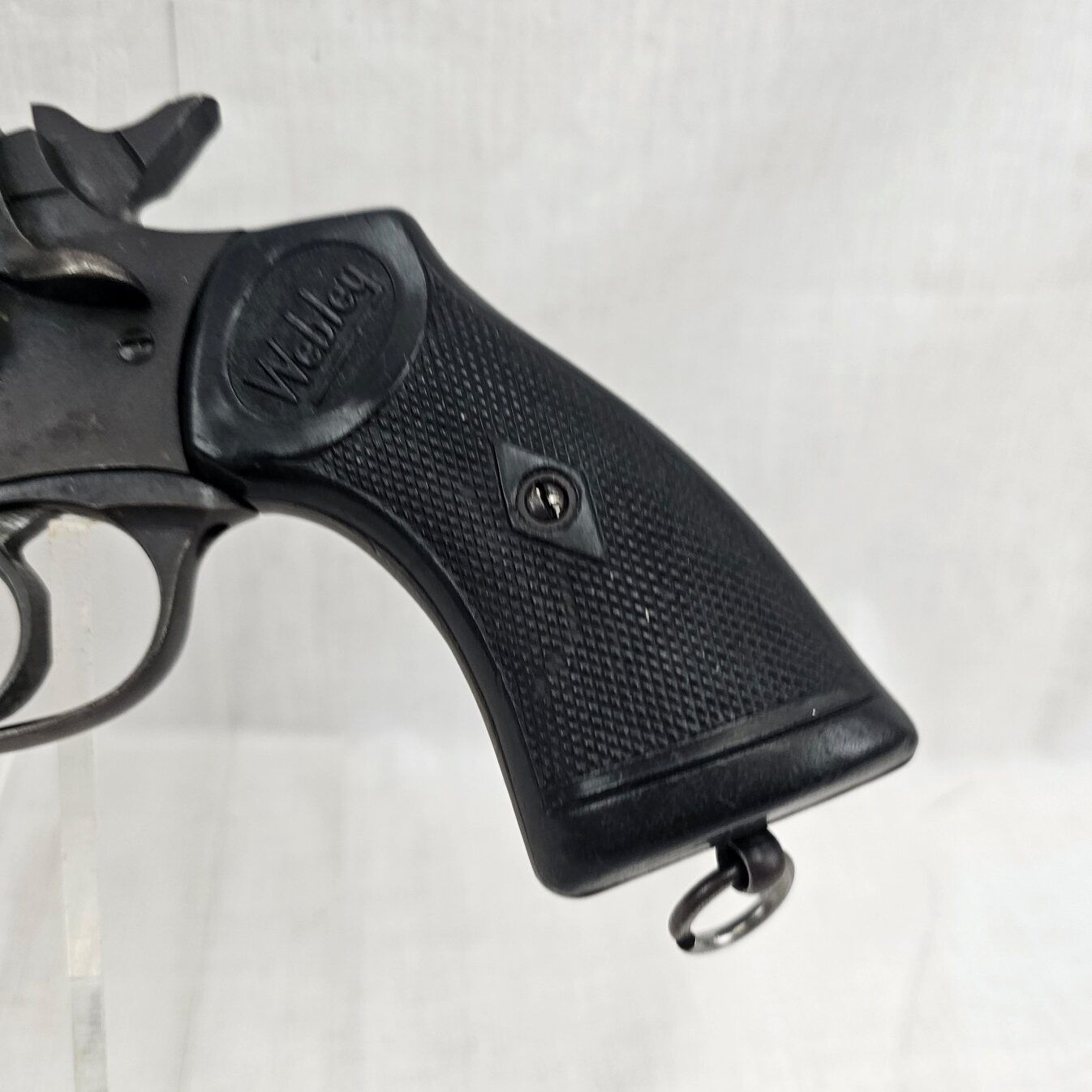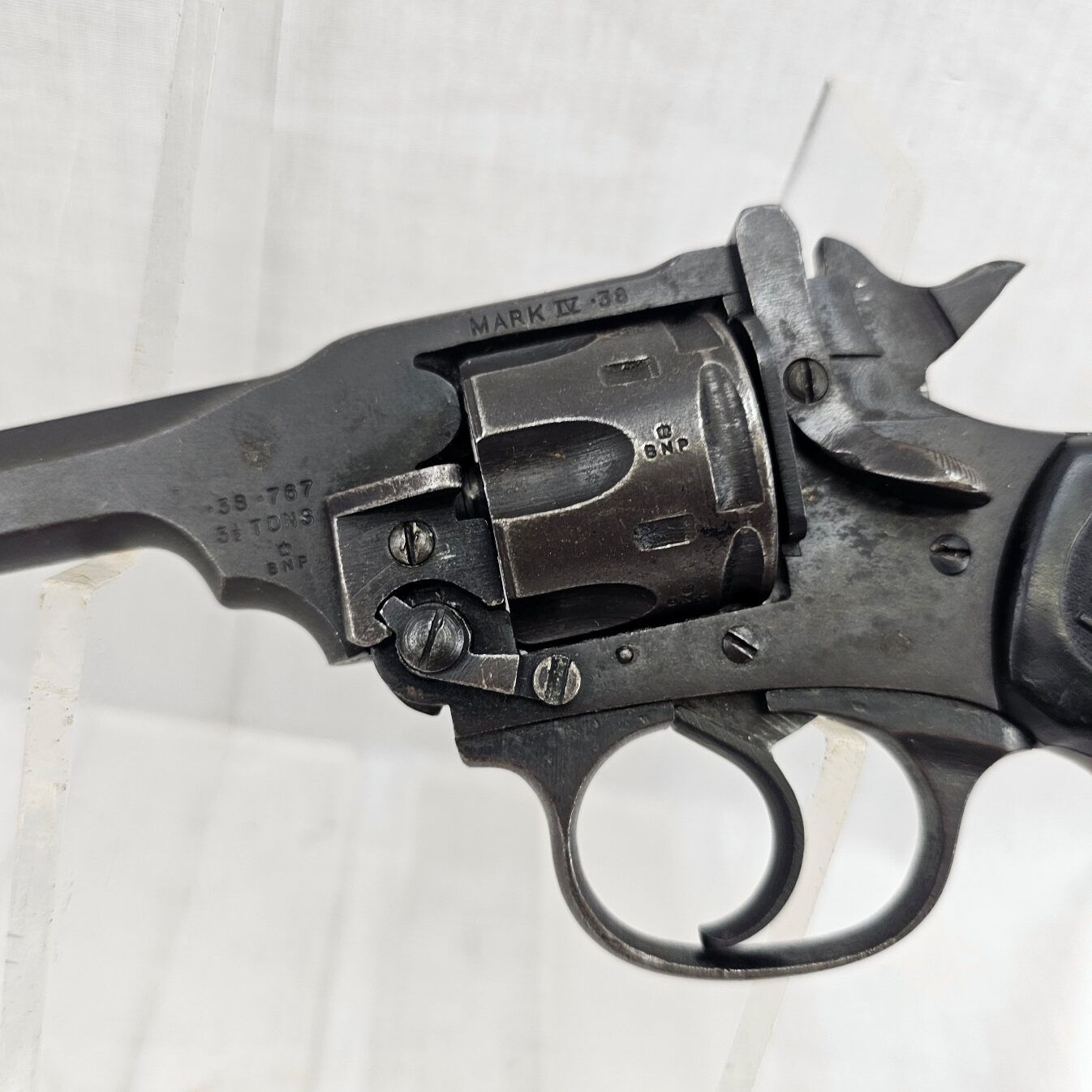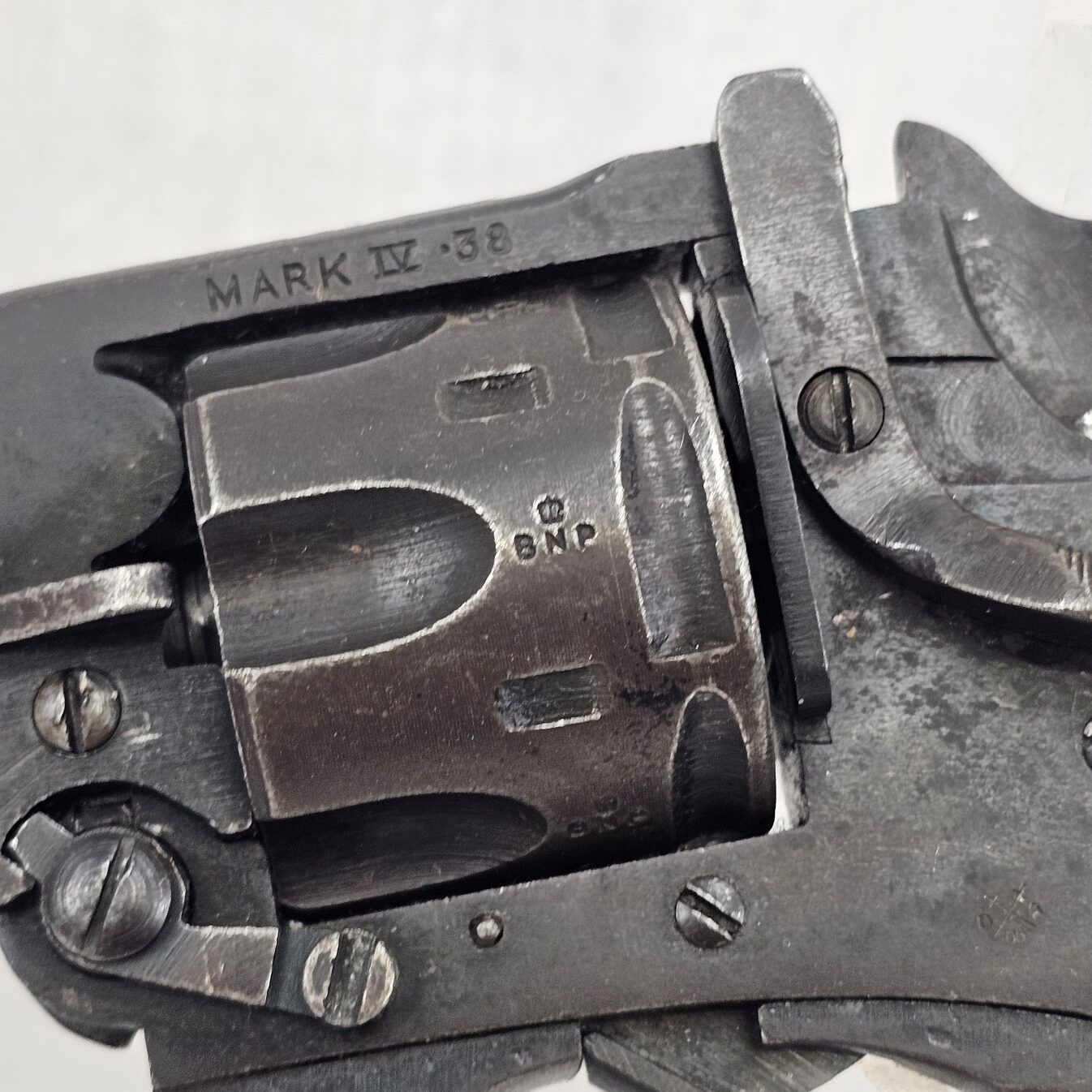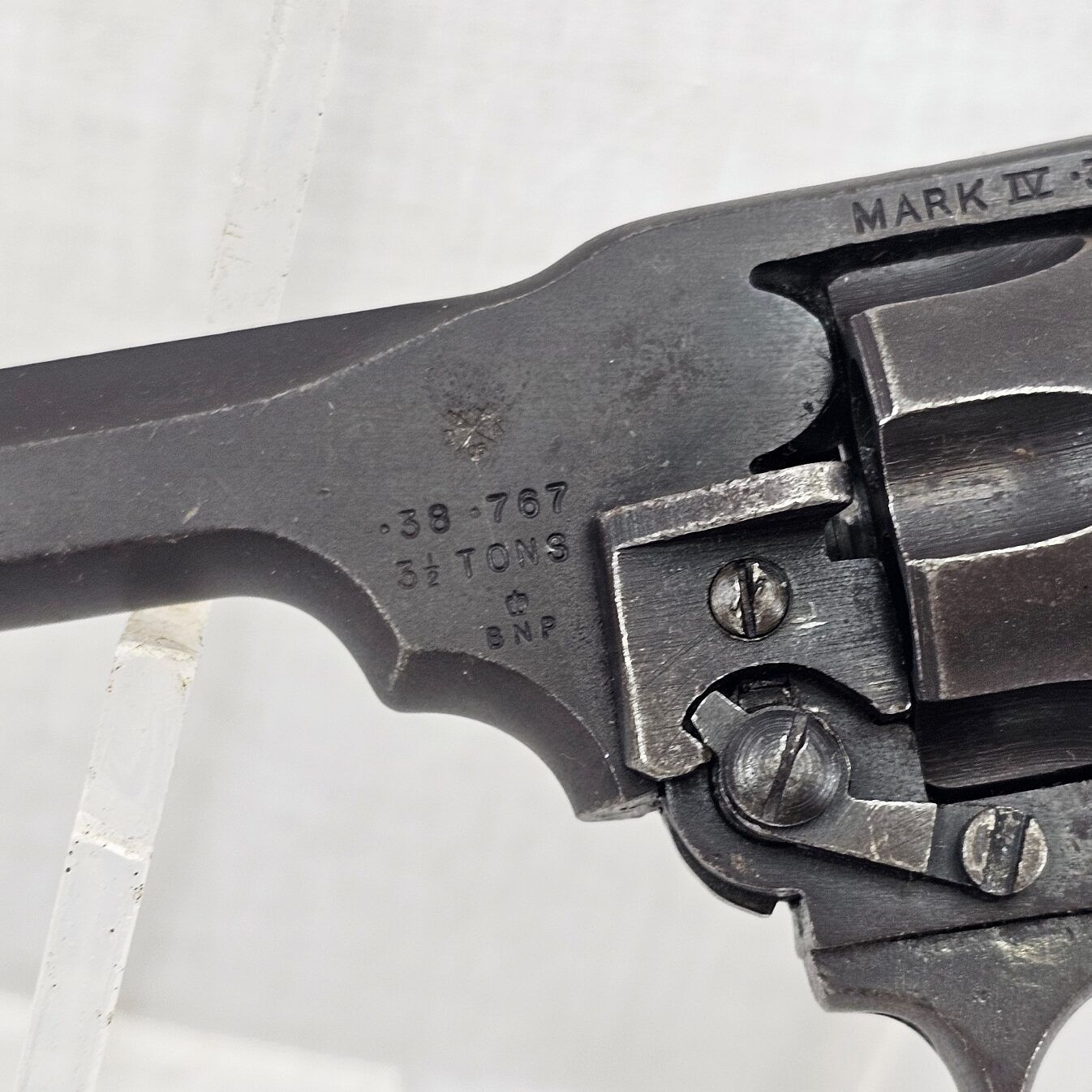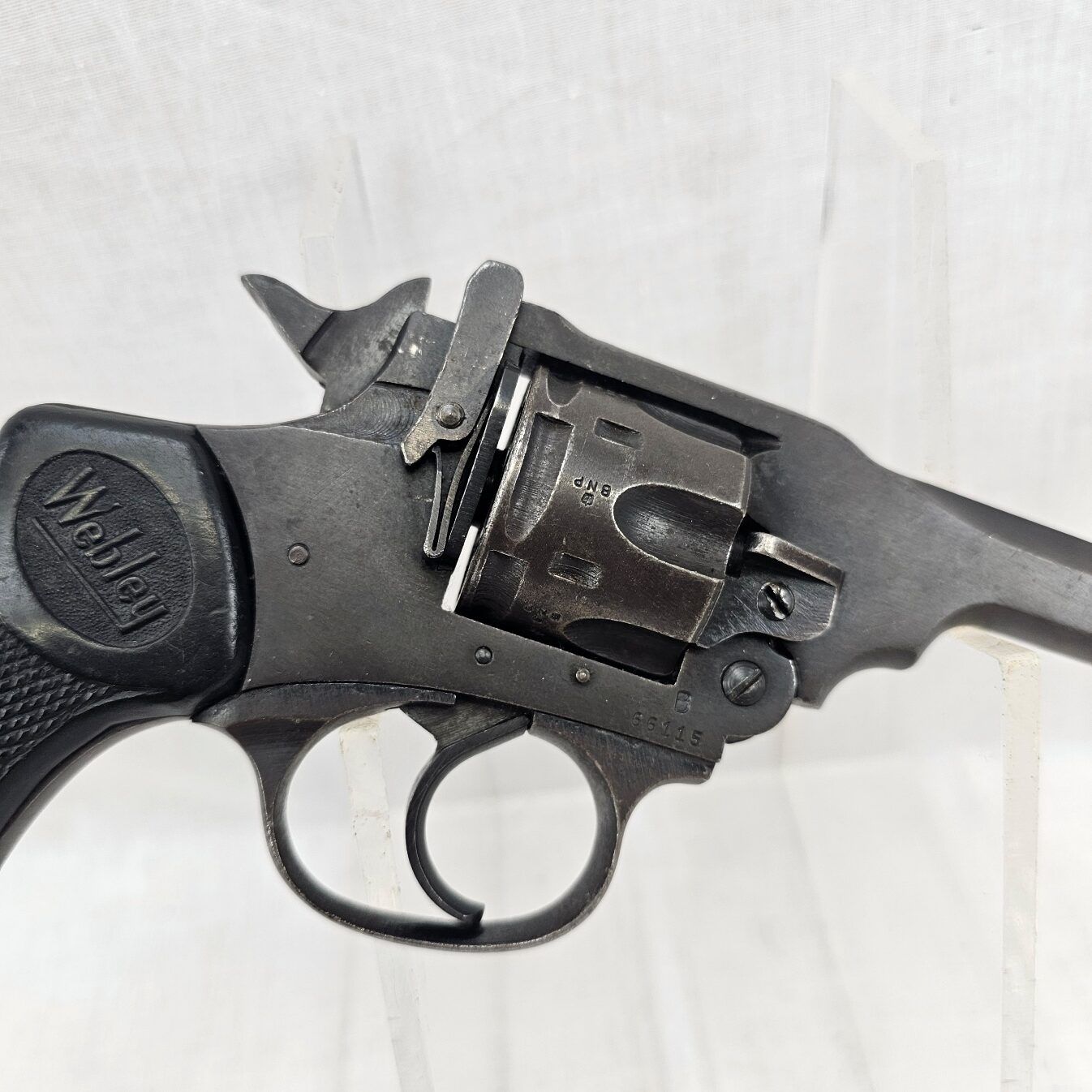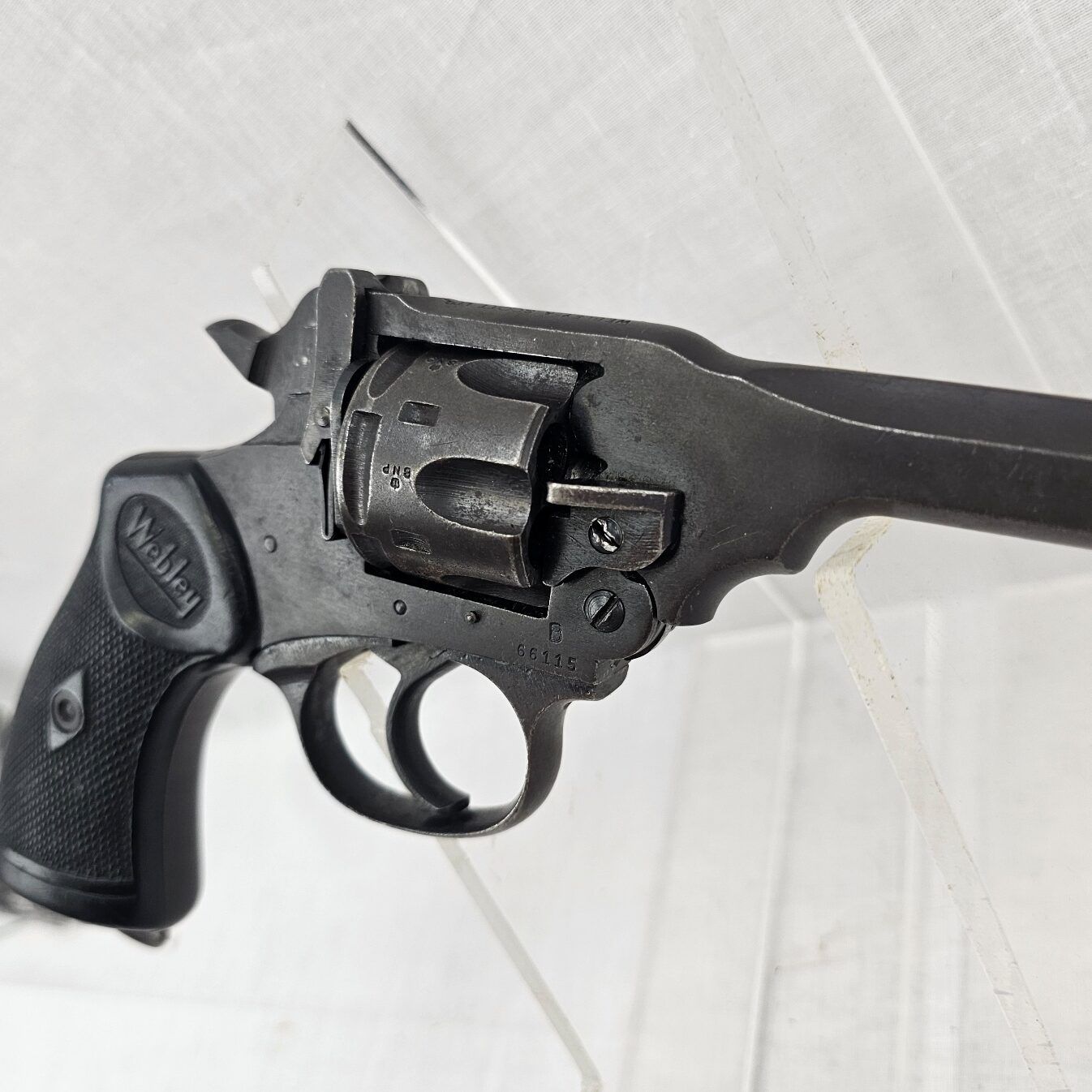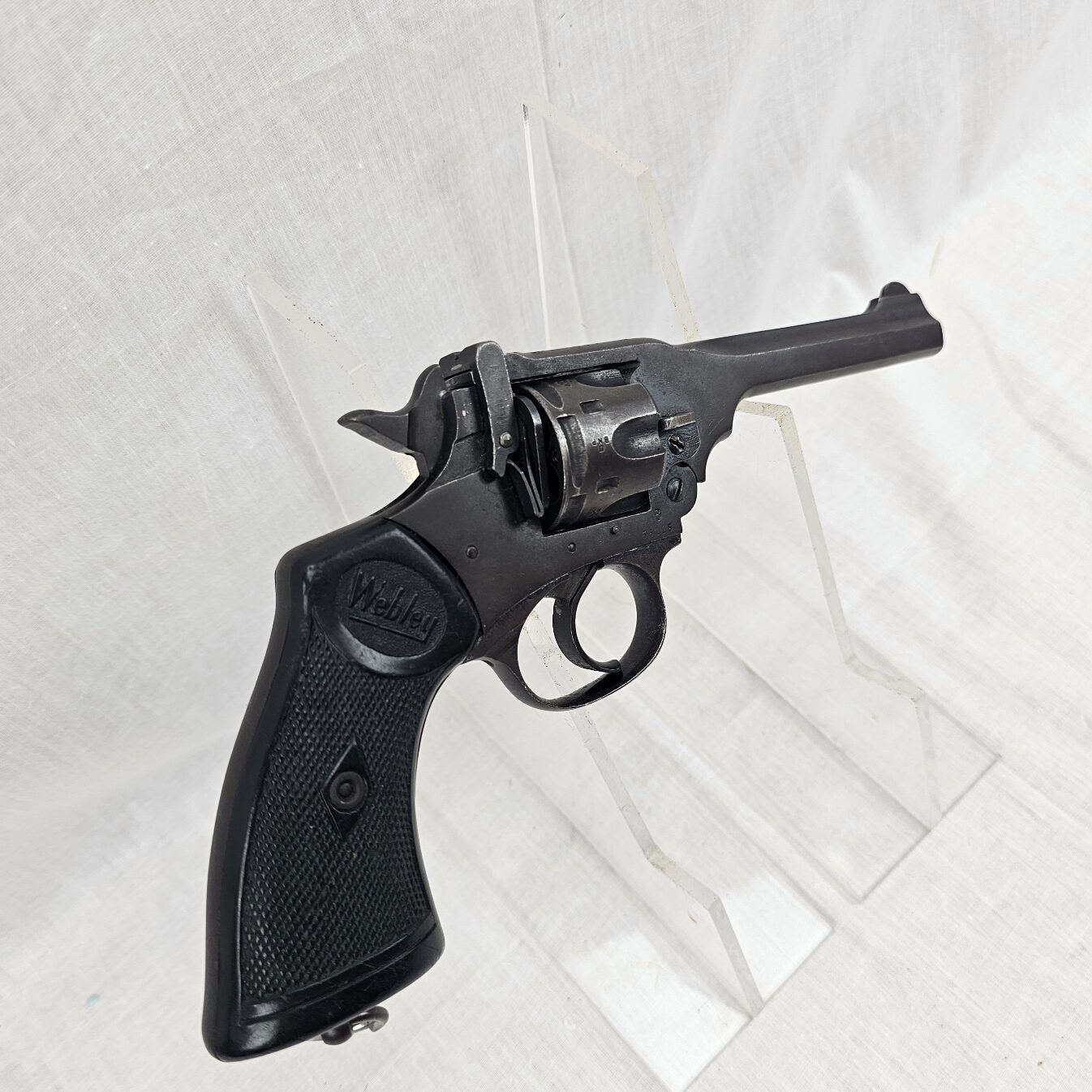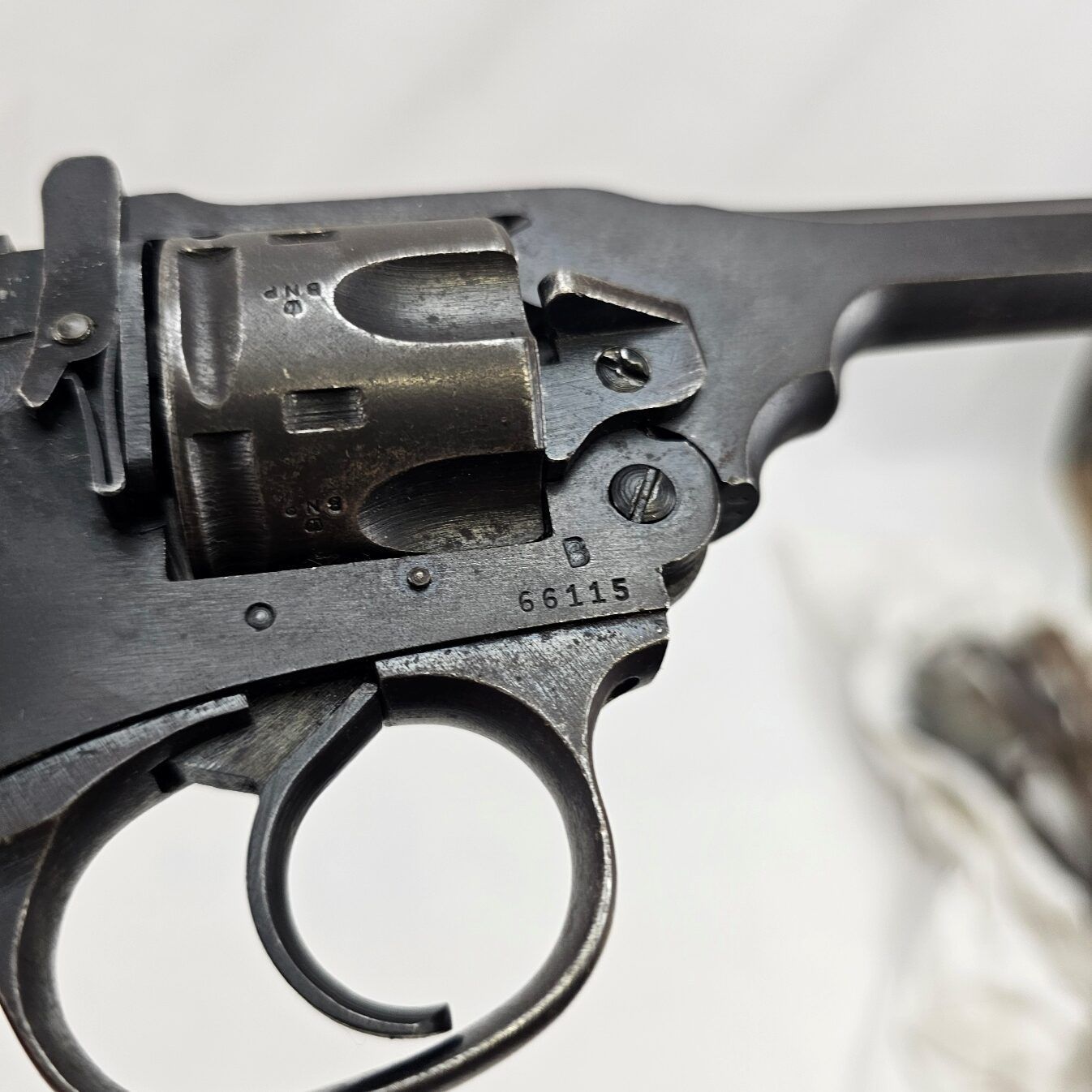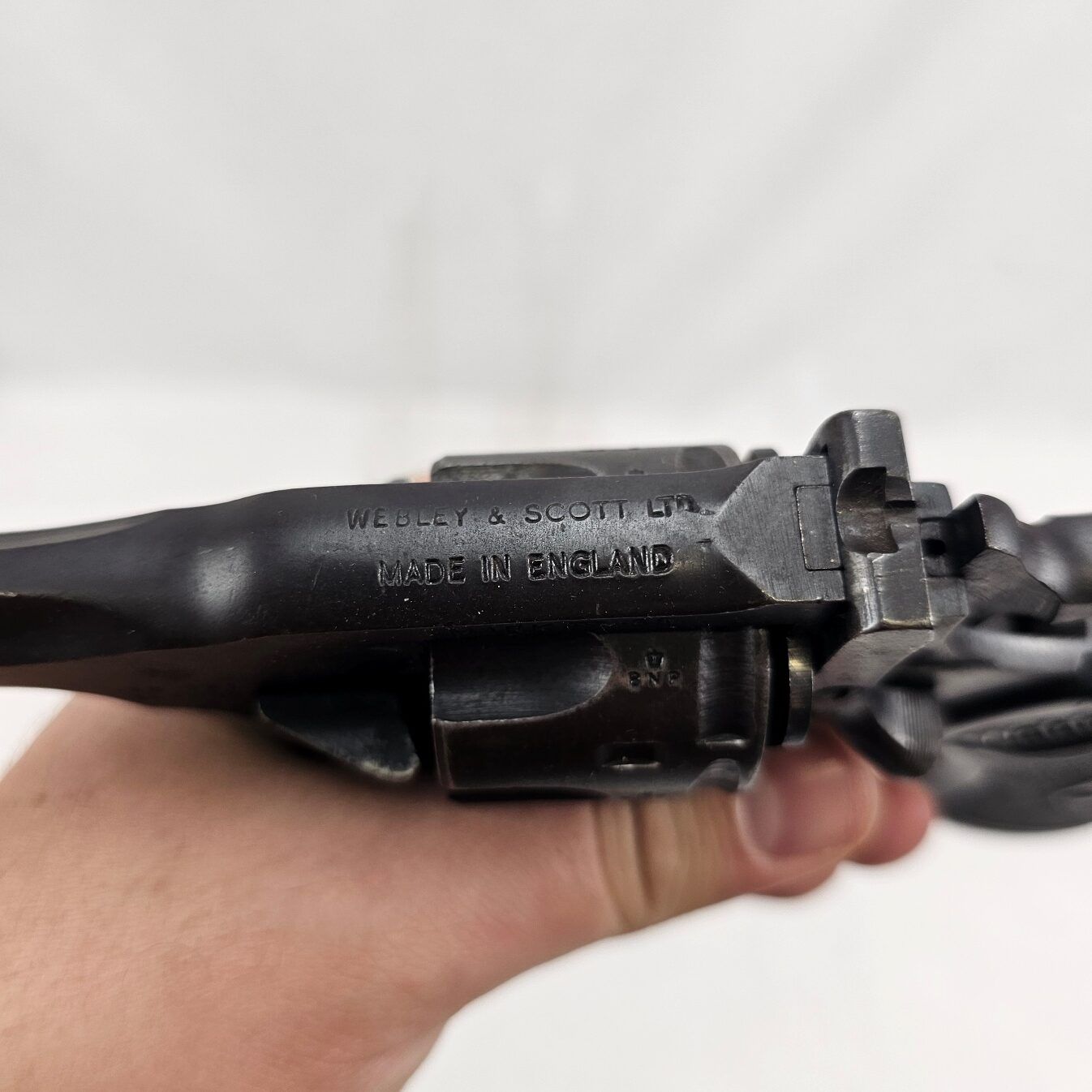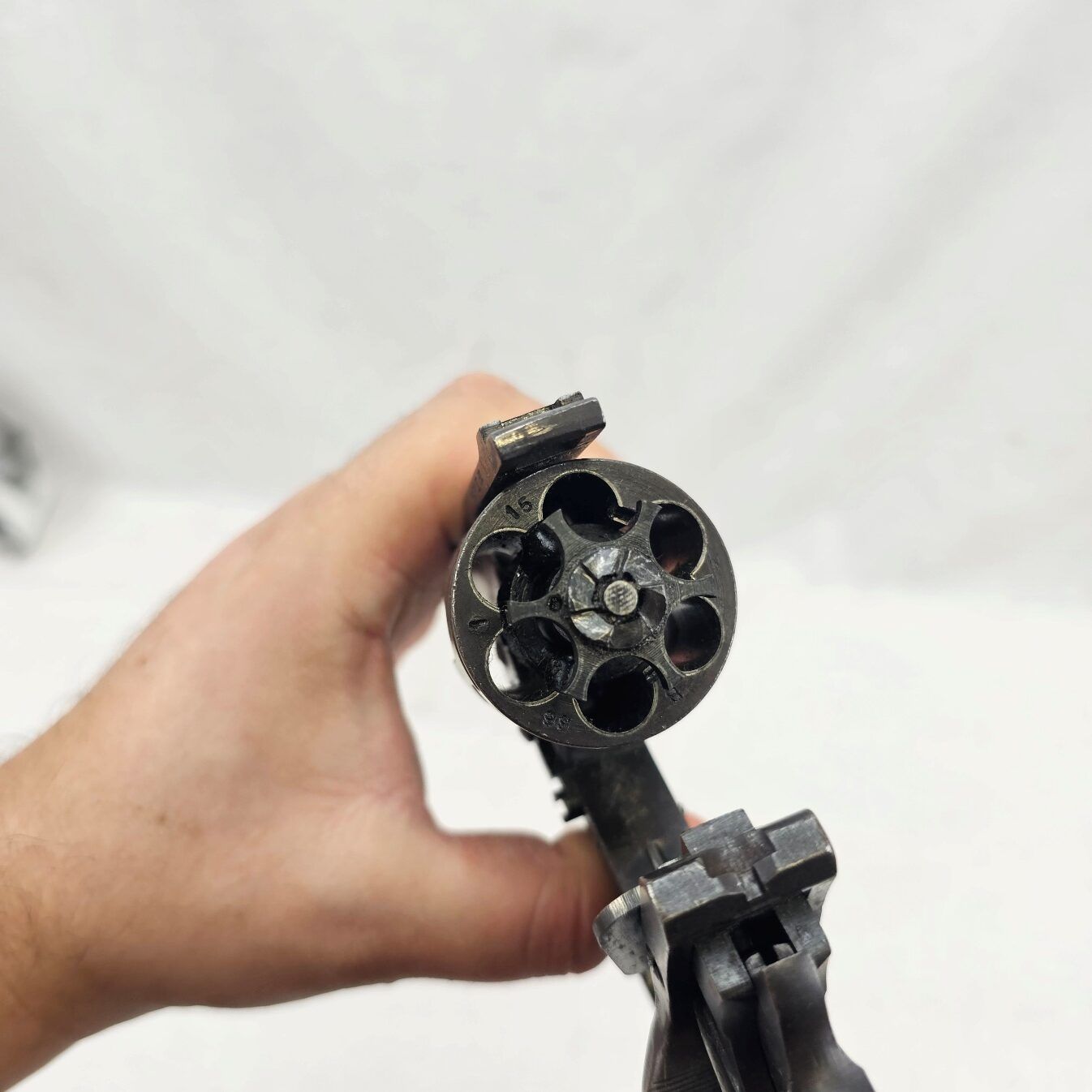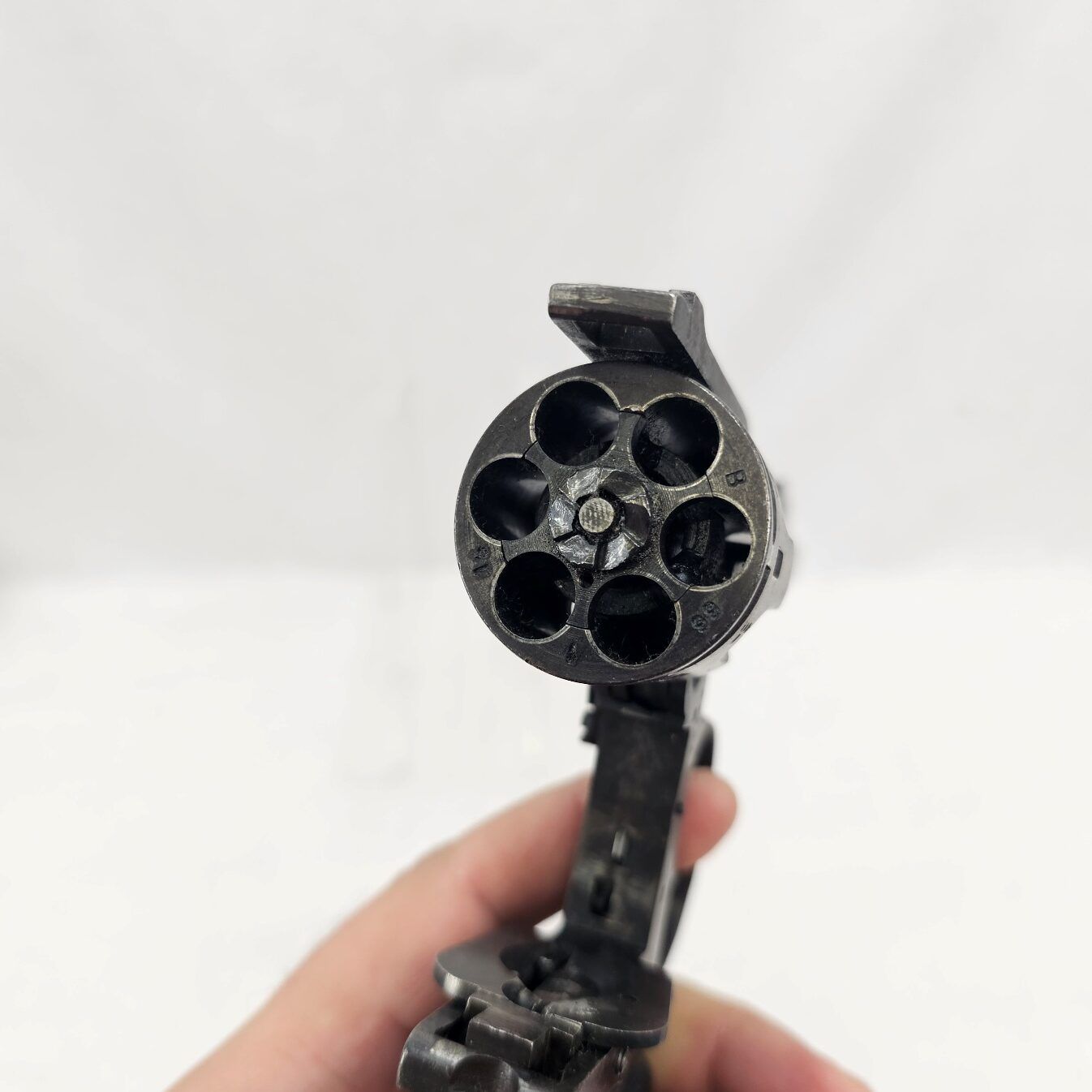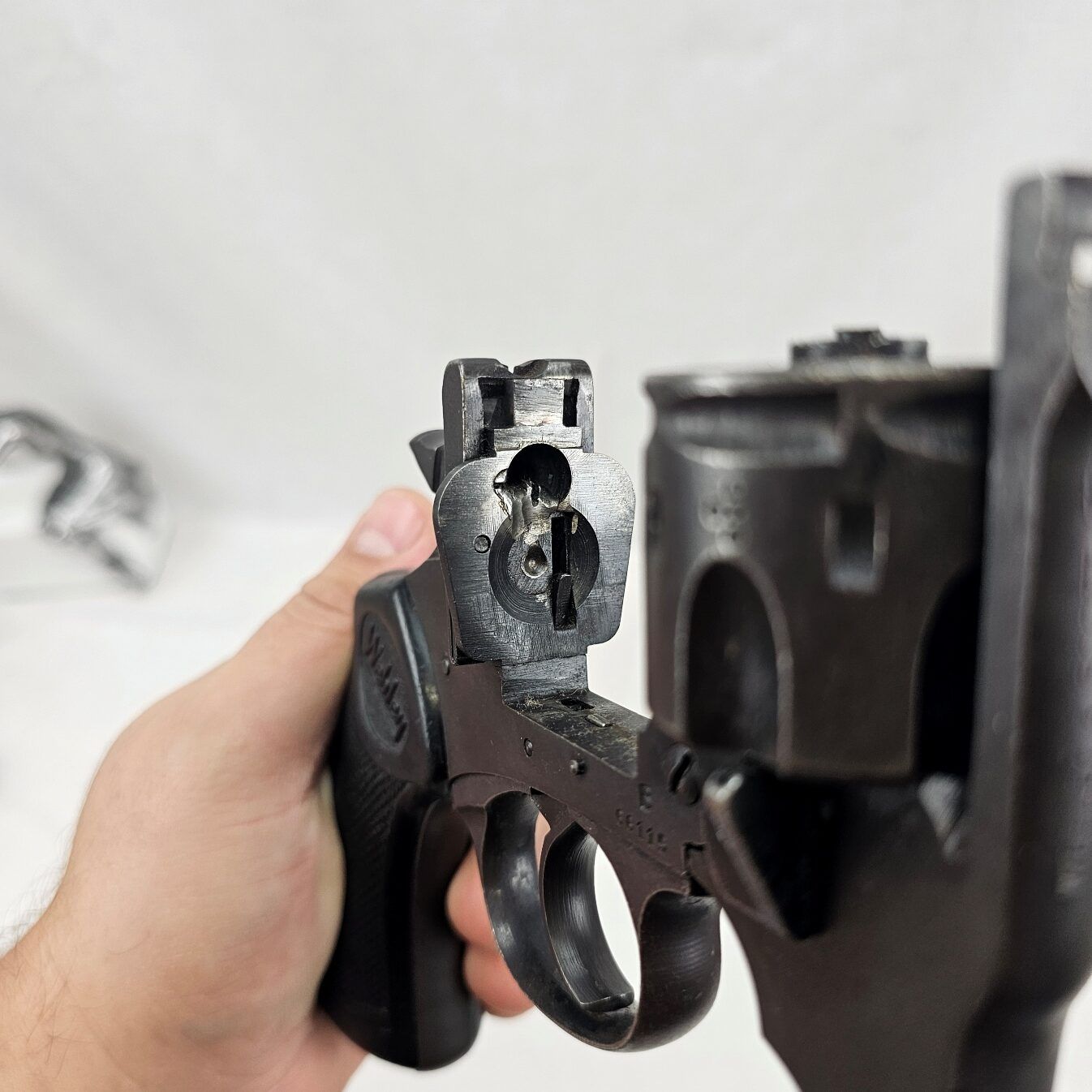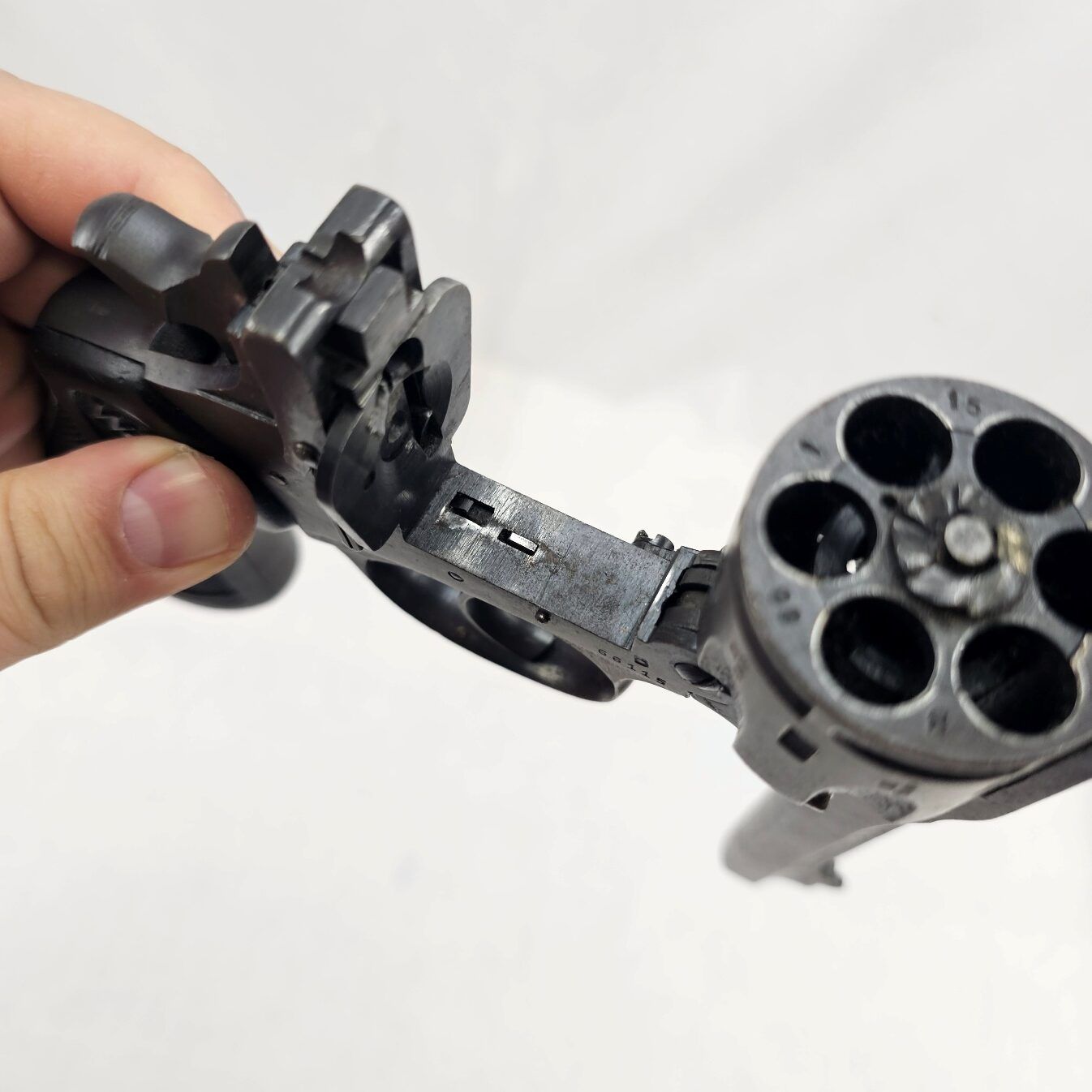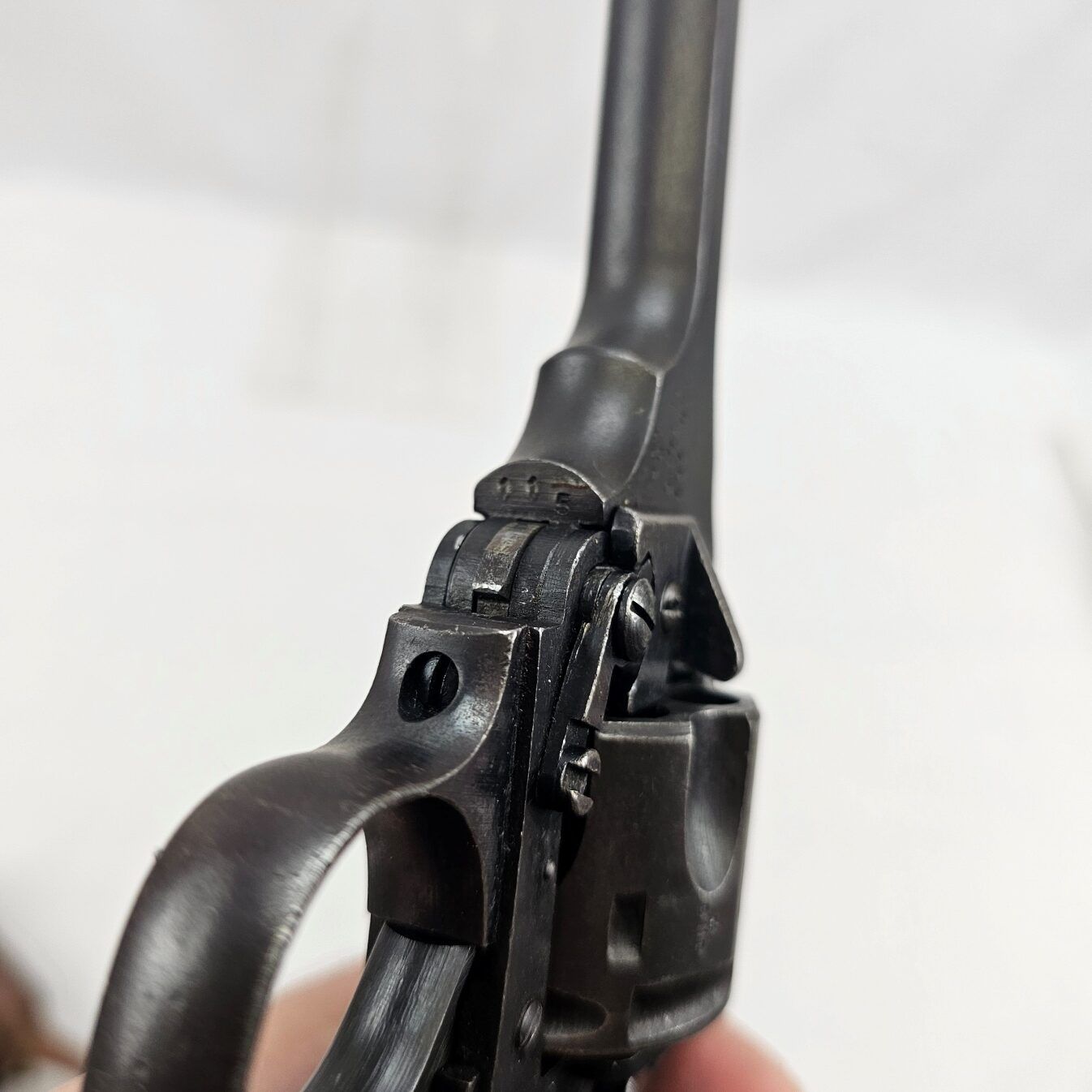~ WW2 British Webley Mk IV .38 Cal SN. B66115 – Deactivated ~
The revolver strips, cocks and dry fires.
It is serial numbered B 66115.
The Webley Mk IV .38 Caliber revolver was one of the standard sidearms used by British forces during World War II. Known for its reliability, durability, and distinctive break-top design, the Webley Mk IV was an evolution of Webley’s earlier revolvers, with some changes to suit the requirements of WWII. Although it was initially introduced in the 1920s, it became the primary service revolver for British and Commonwealth forces during the war, often referred to as the “War Finish” model due to its simplified, wartime production methods.
Development and Specifications of the Webley Mk IV:
Design and Origins:
The Webley revolvers have a long legacy dating back to the 19th century, with earlier models like the Webley Mk VI in .455 caliber being the standard British sidearm in World War I.
In the interwar period, Webley developed the Mk IV in .38 S&W caliber to meet changing military preferences for lighter, easier-to-control handguns. This change was largely due to the recognition that the .38 caliber was easier to handle and allowed for faster, more accurate shooting compared to the more powerful .455 rounds.
Officially adopted in 1932, the Webley Mk IV was widely distributed to soldiers, police, and various auxiliary forces by the time WWII broke out.
Specifications:
Caliber: .38/200 (British designation for .38 S&W with a 200-grain bullet, although many wartime rounds were lighter).
Operation: Double-action or single-action revolver, allowing the shooter to fire by simply pulling the trigger (double-action) or manually cocking the hammer for lighter trigger pressure (single-action).
Capacity: 6-round cylinder.
Barrel Length: Commonly around 5 inches, though some variants had shorter barrels.
Weight: Approximately 1.7 pounds, making it lighter than its .455 predecessors.
Break-Top Design: The revolver’s top-break mechanism allowed for quick ejection and reloading of cartridges. When opened, a cam mechanism would eject all six spent casings simultaneously.
Wartime Production Features:
Webley Mk IVs made during WWII were often stamped with “War Finish” to indicate the production shortcuts and simplifications taken to expedite manufacturing.
Materials and finishing processes were somewhat simplified to speed up production and reduce costs, which resulted in a more utilitarian appearance but did not compromise functionality.
Role and Use:
The Mk IV became the primary sidearm for British and Commonwealth forces, serving in numerous theaters such as North Africa, Europe, and the Pacific.
Its reliability and ease of use made it ideal for both infantry and auxiliary forces, such as engineers, military police, and medical personnel.
Unlike automatic pistols, which could be more prone to jamming in adverse conditions, the revolver’s simplicity and sturdiness made it a dependable choice under field conditions.
Comparison to Smith & Wesson Victory Revolver:
While the Webley Mk IV was the official sidearm, many British units were also issued the Smith & Wesson Victory Model in .38 caliber due to production demands.
The Webley Mk IV, however, remained popular due to familiarity among British forces and its robust, proven design.
Historical Significance:
The Webley Mk IV is a classic example of a utilitarian, reliable service revolver that performed well in WWII’s varied and harsh environments.
Post-WWII, the Mk IV remained in service until it was eventually phased out in favor of semi-automatic pistols in the 1950s and 60s.
In popular culture, the Webley Mk IV has become iconic as the sidearm of the British military in WWII, with its distinct shape and break-top action making it instantly recognizable.


